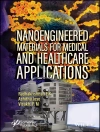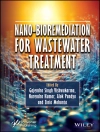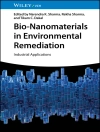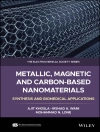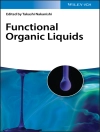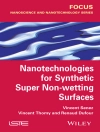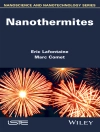The focus behind this book on wafer bonding is the fast paced changes in the research and development in three-dimensional (3D) integration, temporary bonding and micro-electro-mechanical systems (MEMS) with new functional layers. Written by authors and edited by a team from microsystems companies and industry-near research organizations, this handbook and reference presents dependable, first-hand information on bonding technologies.
Part I sorts the wafer bonding technologies into four categories: Adhesive and Anodic Bonding; Direct Wafer Bonding; Metal Bonding; and Hybrid Metal/Dielectric Bonding. Part II summarizes the key wafer bonding applications developed recently, that is, 3D integration, MEMS, and temporary bonding, to give readers a taste of the significant applications of wafer bonding technologies.
This book is aimed at materials scientists, semiconductor physicists, the semiconductor industry, IT engineers, electrical engineers, and libraries.
表中的内容
Preface xv
Obituary xvii
List of Contributors xxi
Introduction xxv
Part One Technologies 1
A. Adhesive and Anodic Bonding 3
1 Glass Frit Wafer Bonding 3
Roy Knechtel
1.1 Principle of Glass Frit Bonding 3
1.2 Glass Frit Materials 4
1.3 Screen Printing: Process for Bringing Glass Frit Material onto Wafers 5
1.4 Thermal Conditioning: Process for Transforming Printed Paste into Glass for Bonding 8
1.5 Wafer Bond Process: Essential Wafer-to-Wafer Mounting by a Glass Frit Interlayer 11
1.6 Characterization of Glass Frit Bonds 14
1.7 Applications of Glass Frit Wafer Bonding 15
1.8 Conclusions 16
References 17
2 Wafer Bonding Using Spin-On Glass as Bonding Material 19
Viorel Dragoi
2.1 Spin-On Glass Materials 19
2.2 Wafer Bonding with SOG Layers 21
2.2.1 Experimental 21
2.2.2 Wafer Bonding with Silicate SOG Layers 22
2.2.3 Wafer Bonding with Planarization SOG 28
2.2.4 Applications of Adhesive Wafer Bonding with SOG Layers 29
2.2.5 Conclusion 30
References 31
3 Polymer Adhesive Wafer Bonding 33
Frank Niklaus and Jian-Qiang Lu
3.1 Introduction 33
3.2 Polymer Adhesives 34
3.2.1 Polymer Adhesion Mechanisms 34
3.2.2 Properties of Polymer Adhesives 36
3.2.3 Polymer Adhesives for Wafer Bonding 38
3.3 Polymer Adhesive Wafer Bonding Technology 42
3.3.1 Polymer Adhesive Wafer Bonding Process 43
3.3.2 Localized Polymer Adhesive Wafer Bonding 50
3.4 Wafer-to-Wafer Alignment in Polymer Adhesive Wafer Bonding 52
3.5 Examples for Polymer Adhesive Wafer Bonding Processes and Programs 54
3.5.1 Bonding with Thermosetting Polymers for Permanent Wafer Bonds (BCB) or for Temporary Wafer Bonds (mr-I 9000) 54
3.5.2 Bonding with Thermoplastic Polymer (HD-3007) for Temporary and Permanent Wafer Bonds 56
3.6 Summary and Conclusions 57
References 58
4 Anodic Bonding 63
Adriana Cozma Lapadatu and Kari Schjølberg-Henriksen
4.1 Introduction 63
4.2 Mechanism of Anodic Bonding 64
4.2.1 Glass Polarization 64
4.2.2 Achieving Intimate Contact 65
4.2.3 Interface Reactions 66
4.3 Bonding Current 67
4.4 Glasses for Anodic Bonding 68
4.5 Characterization of Bond Quality 69
4.6 Pressure Inside Vacuum-Sealed Cavities 70
4.7 Effect of Anodic Bonding on Flexible Structures 71
4.8 Electrical Degradation of Devices during Anodic Bonding 71
4.8.1 Degradation by Sodium Contamination 72
4.8.2 Degradation by High Electric Fields 73
4.9 Bonding with Thin Films 75
4.10 Conclusions 76
References 77
B. Direct Wafer Bonding 81
5 Direct Wafer Bonding 81
Manfred Reiche and Ulrich Gösele
5.1 Introduction 81
5.2 Surface Chemistry and Physics 82
5.3 Wafer Bonding Techniques 84
5.3.1 Hydrophilic Wafer Bonding 84
5.3.2 Hydrophobic Wafer Bonding 86
5.3.3 Low-Temperature Wafer Bonding 88
5.3.4 Wafer Bonding in Ultrahigh Vacuum 89
5.4 Properties of Bonded Interfaces 90
5.5 Applications of Wafer Bonding 93
5.5.1 Advanced Substrates for Microelectronics 93
5.5.2 MEMS and Nanoelectromechanical Systems 95
5.6 Conclusions 95
References 96
6 Plasma-Activated Bonding 101
Maik Wiemer, Dirk Wuensch, Joerg Braeuer, and Thomas Gessner
6.1 Introduction 101
6.2 Theory 102
6.2.1 (Silicon) Direct Bonding 102
6.2.2 Mechanisms of Plasma on Silicon Surfaces 103
6.2.3 Physical Definition of a Plasma 104
6.3 Classification of PAB 104
6.3.1 Low-Pressure PAB 105
6.3.2 Atmospheric-Pressure PAB 106
6.4 Procedure of PAB 107
6.4.1 Process Flow 107
6.4.2 Characterization Techniques 108
6.4.3 Experiments and Results 110
6.5 Applications for PAB 111
6.5.1 Pressure Sensor 112
6.5.2 Optical Microsystem 112
6.5.3 Microfluidics Packaging 113
6.5.4 Backside-Illuminated CMOS Image Sensor 113
6.5.5 CMOS Compatibility of Low-Pressure PAB 114
6.6 Conclusion 115
References 115
C. Metal Bonding 119
7 Au/Sn Solder 119
Hermann Oppermann and Matthias Hutter
7.1 Introduction 119
7.2 Au/Sn Solder Alloy 120
7.3 Reflow Soldering 127
7.4 Thermode Soldering 130
7.5 Aspects of Three-Dimensional Integration and Wafer-Level Assembly 132
7.6 Summary and Conclusions 135
References 136
8 Eutectic Au–In Bonding 139
Mitsumasa Koyanagi and Makoto Motoyoshi
8.1 Introduction 139
8.2 Organic/Metal Hybrid Bonding 140
8.3 Organic/In–Au Hybrid Bonding 142
8.3.1 In–Au Phase Diagram and Bonding Principle 142
8.3.2 Formation of In–Au Microbumps by a Planarized Liftoff Method 144
8.3.3 Eutectic In–Au Bonding and Epoxy Adhesive Injection 146
8.3.4 Electrical Characteristics of In–Au Microbumps 148
8.4 Three-Dimensional LSI Test Chips Fabricated by Eutectic In–Au Bonding 149
8.5 High-Density and Narrow-Pitch Mircobump Technology 152
8.6 Conclusion 157
Acknowledgment 157
References 157
9 Thermocompression Cu–Cu Bonding of Blanket and Patterned Wafers 161
Kuan-Neng Chen and Chuan Seng Tan
9.1 Introduction 161
9.2 Classification of the Cu Bonding Technique 162
9.2.1 Thermocompression Cu Bonding 162
9.2.2 Surface-Activated Cu Bonding 162
9.3 Fundamental Properties of Cu Bonding 163
9.3.1 Morphology and Oxide Examination of Cu Bonded Layer 163
9.3.2 Microstructure Evolution during Cu Bonding 164
9.3.3 Orientation Evolution during Cu Bonding 165
9.4 Development of Cu Bonding 166
9.4.1 Fabrication and Surface Preparation of Cu Bond Pads 166
9.4.2 Parameters of Cu Bonding 167
9.4.3 Structural Design 168
9.5 Characterization of Cu Bonding Quality 169
9.5.1 Mechanical Tests 169
9.5.2 Image Analysis 170
9.5.3 Electrical Characterization 171
9.5.4 Thermal Reliability 171
9.6 Alignment Accuracy of Cu–Cu Bonding 171
9.7 Reliable Cu Bonding and Multilayer Stacking 172
9.8 Nonblanket Cu–Cu Bonding 174
9.9 Low-Temperature (<300 °C) Cu–Cu Bonding 176
9.10 Applications of Cu Wafer Bonding 178
9.11 Summary 178
References 179
10 Wafer-Level Solid–Liquid Interdiffusion Bonding 181
Nils Hoivik and Knut Aasmundtveit
10.1 Background 181
10.1.1 Solid–Liquid Interdiffusion Bonding Process 181
10.1.2 SLID Bonding Compared with Soldering 182
10.1.3 Material Systems for SLID Bonding 183
10.2 Cu–Sn SLID Bonding 189
10.2.1 Cu–Sn Material Properties and Required Metal Thicknesses 190
10.2.2 Bonding Processes 191
10.2.3 Pretreatment Requirements for SLID Bonding 195
10.2.4 Fluxless Bonding 196
10.3 Au–Sn SLID Bonding 199
10.3.1 Au–Sn Material Properties and Required Metal Thicknesses 199
10.3.2 Bonding Processes 199
10.4 Application of SLID Bonding 201
10.4.1 Cu–Sn Bonding 201
10.4.2 Au–Sn Bonding 204
10.5 Integrity of SLID Bonding 207
10.5.1 Electrical Reliability and Electromigration Testing 207
10.5.2 Mechanical Strength of SLID Bonds 207
10.6 Summary 210
References 212
D. Hybrid Metal/Dielectric Bonding 215
11 Hybrid Metal/Polymer Wafer Bonding Platform 215
Jian-Qiang Lu, J. Jay Mc Mahon, and Ronald J. Gutmann
11.1 Introduction 215
11.2 Three-Dimensional Platform Using Hybrid Cu/BCB Bonding 217
11.3 Baseline Bonding Process for Hybrid Cu/BCB Bonding Platform 220
11.4 Evaluation of Cu/BCB Hybrid Bonding Processing Issues 222
11.4.1 CMP and Bonding of Partially Cured BCB 222
11.4.2 Cu/BCB CMP Surface Profile 223
11.4.3 Hybrid Cu/BCB Bonding Interfaces 224
11.4.4 Topography Accommodation Capability of Partially Cured BCB 227
11.4.5 Electrical Characterization of Hybrid Cu/BCB Bonding 231
11.5 Summary and Conclusions 232
Acknowledgments 233
References 233
12 Cu/Si O2 Hybrid Bonding 237
Léa Di Cioccio
12.1 Introduction 237
12.2 Blanket Cu/Si O2 Direct Bonding Principle 239
12.2.1 Chemical Mechanical Polishing Parameters 239
12.2.2 Bonding Quality and Alignment 243
12.3 Blanket Copper Direct Bonding Principle 245
12.4 Electrical Characterization 251
12.5 Die-to-Wafer Bonding 255
12.5.1 Daisy Chain Structures 256
12.6 Conclusion 257
Acknowledgment 257
References 258
13 Metal/Silicon Oxide Hybrid Bonding 261
Paul Enquist
13.1 Introduction 261
13.2 Metal/Non-adhesive Hybrid Bonding – Metal DBI® 261
13.3 Metal/Silicon Oxide DBI® 262
13.3.1 Metal/Silicon Oxide DBI® Surface Fabrication 263
13.3.2 Metal/Silicon Oxide DBI® Surface Patterning 264
13.3.3 Metal/Silicon Oxide DBI® Surface Topography 264
13.3.4 Metal/Silicon Oxide DBI® Surface Roughness 264
13.3.5 Metal/Silicon Oxide DBI® Surface Activation and Termination 265
13.3.6 Metal/Silicon Oxide DBI® Alignment and Hybrid Surface Contact 265
13.3.7 Metal Parameters Relevant to DBI® Surface Fabrication and Electrical Interconnection 268
13.3.8 DBI® Metal/Silicon Oxide State of the Art 270
13.4 Metal/Silicon Nitride DBI® 271
13.5 Metal/Silicon Oxide DBI® Hybrid Bonding Applications 273
13.5.1 Pixelated 3D ICs 273
13.5.2 Three-Dimensional Heterogeneous Integration 275
13.5.3 CMOS (Ultra) Low-k 3D Integration 276
13.6 Summary 276
References 277
Part Two Applications 279
14 Microelectromechanical Systems 281
Maaike M.V. Taklo
14.1 Introduction 281
14.2 Wafer Bonding for Encapsulation of MEMS 282
14.2.1 Protection during Wafer Dicing 282
14.2.2 Routing of Electrical Signal Lines 282
14.3 Wafer Bonding to Build Advanced MEMS Structures 284
14.3.1 Stacking of Several Wafers 284
14.3.2 Post-processing of Bonded Wafers 285
14.4 Examples of MEMS and Their Requirements for the Bonding Process 286
14.5 Integration of Some Common Wafer Bonding Processes 287
14.5.1 Fusion Bonding of Patterned Wafers 287
14.5.2 Anodic Bonding of Patterned Wafers 290
14.5.3 Eutectic Bonding of Patterned Wafers: Au Sn 293
14.6 Summary 297
References 297
15 Three-Dimensional Integration 301
Philip Garrou, James Jian-Qiang Lu, and Peter Ramm
15.1 Definitions 301
15.2 Application of Wafer Bonding for 3D Integration Technology 303
15.3 Motivations for Moving to 3D Integration 305
15.4 Applications of 3D Integration Technology 307
15.4.1 Three-Dimensional Applications by Evolution Not Revolution 307
15.4.2 Microbump Bonding/No TSV 308
15.4.3 TSV Formation/No Stacking 310
15.4.4 Memory 312
15.4.5 Memory on Logic 321
15.4.6 Repartitioning Logic 322
15.4.7 Foundry and OSAT Activity 323
15.4.8 Other 3D Applications 323
15.5 Conclusions 325
References 325
16 Temporary Bonding for Enabling Three-Dimensional Integration and Packaging 329
Rama Puligadda
16.1 Introduction 329
16.2 Temporary Bonding Technology Options 330
16.2.1 Key Requirements 331
16.2.2 Foremost Temporary Wafer Bonding Technologies 332
16.3 Boundary Conditions for Successful Processing 337
16.3.1 Uniform and Void-Free Bonding 337
16.3.2 Protection of Wafer Edges during Thinning and Subsequent Processing 337
16.4 Three-Dimensional Integration Processes Demonstrated with Thermomechanical Debonding Approach 338
16.4.1 Via-Last Process on CMOS Image Sensor Device Wafers 338
16.4.2 Via-Last Process with Aspect Ratio of 2 : 1 341
16.4.3 Via-Last Process with 50 μm Depth Using High-Temperature TEOS Process 341
16.4.4 Die-to-Wafer Stacking Using Interconnect Via Solid–Liquid Interdiffusion Process 342
16.5 Concluding Remarks 343
Acknowledgments 344
References 344
17 Temporary Adhesive Bonding with Reconfiguration of Known Good Dies for Three-Dimensional Integrated Systems 347
Armin Klumpp and Peter Ramm
17.1 Die Assembly with SLID Bonding 347
17.2 Reconfiguration 348
17.3 Wafer-to-Wafer Assembly by SLID Bonding 349
17.4 Reconfiguration with Ultrathin Chips 351
17.5 Conclusion 352
Acknowledgments 353
References 354
18 Thin Wafer Support System for above 250 °C Processing and Cold De-bonding 355
Werner Pamler and Franz Richter
18.1 Introduction 355
18.2 Process Flow 356
18.2.1 Release Layer Processing 357
18.2.2 Carrier Wafer Processing 357
18.2.3 Bonding Process 357
18.2.4 Thinning 359
18.2.5 De-bonding Process 360
18.2.6 Equipment 361
18.3 Properties 361
18.3.1 Device Wafer Thickness 361
18.3.2 Thickness Uniformity 361
18.3.3 Stability 362
18.4 Applications 362
18.4.1 Bonding of Bumped Wafers 363
18.4.2 Packaging of Ultrathin Dies 363
18.4.3 TSV Processing 364
18.4.4 Re-using the Carrier 364
18.5 Conclusions 364
Acknowledgments 365
References 365
19 Temporary Bonding: Electrostatic 367
Christof Landesberger, Armin Klumpp, and Karlheinz Bock
19.1 Basic Principles: Electrostatic Forces between Parallel Plates 367
19.1.1 Electric Fields and Electrostatic Forces in a Plate Capacitor 368
19.1.2 Electrostatic Attraction in a Bipolar Configuration 369
19.1.3 Johnsen–Rahbek Effect 370
19.2 Technological Concept for Manufacture of Mobile Electrostatic Carriers 371
19.2.1 Selection of Substrate Material 371
19.2.2 Selection of Thin-Film Dielectric Layers 372
19.2.3 Electrode Patterns: Materials and Geometry 374
19.2.4 Examples of Mobile Electrostatic Carriers 375
19.3 Characterization of Electrostatic Carriers 376
19.3.1 Electrical and Thermal Properties, Leakage Currents 376
19.3.2 Possible Influence of Electrostatic Fields on CMOS Devices 378
19.4 Electrostatic Carriers for Processing of Thin and Flexible Substrates 379
19.4.1 Handling and Transfer of Thin Semiconductor Wafers 379
19.4.2 Wafer Thinning and Backside Metallization 380
19.4.3 Electrostatic Carriers in Plasma Processing 380
19.4.4 Electrostatic Carriers Enable Bumping of Thin Wafers 380
19.4.5 Electrostatic Carriers in Wet-Chemical Environments 381
19.4.6 Electrostatic Handling of Single Dies 381
19.4.7 Processing of Foils and Insulating Substrates 381
19.5 Summary and Outlook 382
References 383
Index 385
关于作者
Dr. Peter Ramm is head of the department Device and 3D Integration of Fraunhofer EMFT in Munich, Germany, where he is responsible for process integration of innovative devices and heterogeneous systems with a specific focus on 3D integration technologies. Dr. Ramm received the physics and Dr. rer. nat. degrees from the University of Regensburg and subsequently worked for Siemens in the DRAM facility where he was responsible for the process integration. In 1988 he joined Fraunhofer IFT in Munich, focusing for over two decades on 3D integration technologies. Peter Ramm is author or co-author of over 100 publications and 24 patents. He received the ‘Ashman Award 2009’ from the International Electronics Packaging Society (IMAPS) ‘For Pioneering Work on 3D IC Stacking and Integration, and leading-edge work on Si Ge and Si technologies’. Peter Ramm is Fellow and Life Member of IMAPS, organizing committee member of IEEE 3DIC conference and co-editor of Wiley’s ‘Handbook of 3D Integration’.
Dr. James Jian-Qiang Lu received his Dr. rer. nat. (Ph.D.) degree from Technical University of Munich, and is currently an Associate Professor in Electrical Engineering at Rensselaer Polytechnic Institute (RPI), Troy, NY. Dr. Lu has worked on 3D hyper-integration technology, design and
applications for over a decade, with focus on hyper-integration and micro-nano-bio interfaces for future chips. He has more than 200 publications in the areas from micro-nano-electronics theory and design to materials, processing, devices, integration and packaging. He is an IEEE Fellow for contributions to three-dimensional integrated circuit technology, and a Fellow and Life Member of International Microelectronics and Packaging Society (IMAPS). He is a recipient of the 2008 IEEE CPMT Exceptional Technical Achievement Award for his pioneering contributions to and leadership in 3D integration/packaging and the 2010 IMAPS William D. Ashman Achievement Award for contributions and research in 3D integration and packaging.
Dr. Maaike M.V. Taklo is employed as a senior research scientist at SINTEF ICT in Norway at the Department of Instrumentation which she joined in 2010. She is group leader for ‘Advanced Packaging and Interconnects’ within this department. From 1998 until 2010 she was employed at the Department of Microsystems and Nanotechnology within SINTEF ICT where she worked on MEMS processing and was responsible for their wafer level bonding activities. She received her Ph.D. degree in Physical Electronics from the University of Oslo for her thesis entitled ‘Wafer bonding for MEMS’. She is the author or co-author of over 35 papers. In 2008 she received a ‘Best of Conference’ award at the Pan Pacific Symposium for her presentation of ‘BCB Bonded Wireless Vibration Sensor’. She is member of the technical committee of IWLPC and the program committee of 3DIC.


